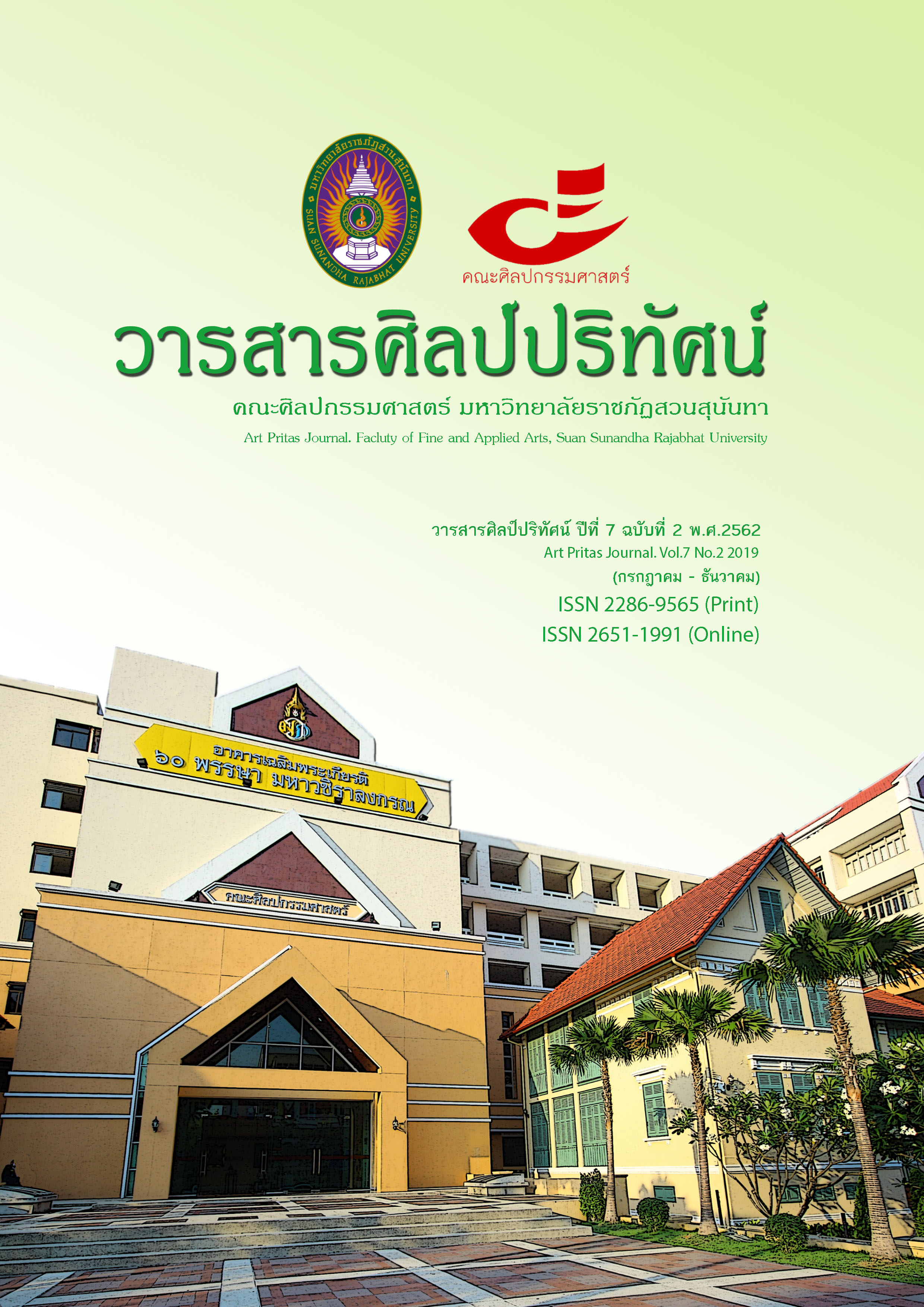Male drama ละครผู้ชาย ละครผู้ชาย
Main Article Content
บทคัดย่อ
ละครผู้ชาย มีกำเนิดจากการเล่นละครของชาวบ้าน ในอดีตการละเล่นของชาวบ้าน มีเพียงการเล่นเพลงพื้นบ้านในลักษณะการร้อง ต่อมามีการพัฒนารูปแบบวิธีการร้องและจับเป็นเรื่องราว มีการออกลีลาประกอบคำร้อง โดยใช้ผู้แสดงเป็นเพศชายทั้งสิ้นไม่ว่าตัวละครที่เป็นเพศหญิง วิธีการแสดงในลักษณะมุ่งเน้าความรวดเร็ว ผู้แสดงร้องเอง เจรจาเอง ในบทสองแหง่สองง่าม เรื่องที่นิยมแสดง มาจากนิทานพื้นบ้าน และได้รับความนิยม จึงเป็นเหตุให้ราชสำนักซึ่งในอดีตมีเพียงระบำ นำไปปรับปรุง ให้มีลักษณะปราญีตยิ่งขึ้น ดำเนินเรื่องเชื่องช้า เน้นกระบวนลีลาท่ารำที่สวยงามเรื่องที่นิยม 3 เรื่อง ได้แก่ เรื่องรามเกียรติ์ อุณรุท อิเหนา ละครผู้ชายพบหลักฐานในสมัยอยุธยา สมเด็จพระนารายณ์มหาราช เป็นกษัตริย์ จาก มองสิเออ เดอ ลาลูแบร์ เอกอัครราชทูตฝรั่งเศส ประพันธ์ขึ้นราวปี 2231 ในการแสดงละครใช้ผู้แสดงเป็นผู้ชายทั้งสิ้น ในสมัย พระบาทสมเด็จพระพุทธเลิศนภาลัย ขณะดำรงตำแหน่ง เป็นสมเด็จเจ้าฟ้ากรมหลวงอิสรสุนทร ทรงจัดให้มีละครผู้หญิงในวังของตน เมื่อทราบถึงพระบาทสมเด็จพระพุทธยอดฟ้าจุฬาโลกมหาราช ทรงพระกริ้ว จึงยกเลิกละครผู้หญิง แล้วนำผู้ชายมาฝึกหัดเล่นเป็นละครตามแบบหลวงและให้ละครผู้ชายแสดงเรื่องอิเหนา ดังนั้นลักษณะของการแสดงละครผู้ชาย มีจึงมีแบบแผนจารีตในการแสดงที่เป็นแบบละครหลวงของผู้หญิง ในรัชกาลพระบาทสมเด็จพระมงกุฎเกล้าเจ้าอยู่หัว ความนิยมในการแสดงลดน้อยลงและค่อย ๆ สูญหายไปเหลือแต่เพียงรูปแบบการแสดงละครหลวงผู้หญิงจนถึงปัจจุบัน
Article Details
เนื้อหาและข้อมูลในบทความที่ลงตีพิมพ์ในวารสารศิลป์ปริทัศน์ ถือเป็นข้อคิดเห็นและความรับผิดชอบของผู้เขียนบทความโดยตรง ซึ่งกองบรรณาธิการวารสารไม่จำเป็นต้องเห็นด้วย หรือร่วมรับผิดชอบใดๆ
บทความ ข้อมูล เนื้อหา รูปภาพ ฯลฯ ที่ได้รับการตีพิมพ์ในวารสารศิลป์ปริทัศน์ถือเป็นลิขสิทธิ์ของวารสารศิลป์ปริทัศน์
เอกสารอ้างอิง
ดำรงราชานุภาพ, สมเด็จเจ้าพระบรมวงศ์เธอ กรมพระยา. 2546. ตำนานละครอิเหนา. พระนคร. คลังวิทยา,
ราชบัณฑิตยสถาน. พจนานุกรมฉบับราชบัณฑิตยสถาน พ.ศ. 2554. กรุงเทพฯ. นานมีบุ๊คส์ พับลิเคชั่น,
สุวรรณี ชลานุเคราะห์. ศิลปินแห่งชาติ สาขาศิลปะการแสดง (นาฏศิลป์-ละครรำ) พุทธศักราช 2533. สัมภาษณ์, 16 ธันวาคม 2560.
ศิลปากร, กรม. ประเพณีเกี่ยวกับชีวิต ของ กรมศิลปากร. พิมพ์เป็นอนุสรณ์ในงานพระราชทานเพลิง พระศพร้อยโท หม่อมราชวงศ์ธวัช (ถวิลวงศ์)สุบรรณ. 6 มีนาคม พุทธศักราช 2515.


